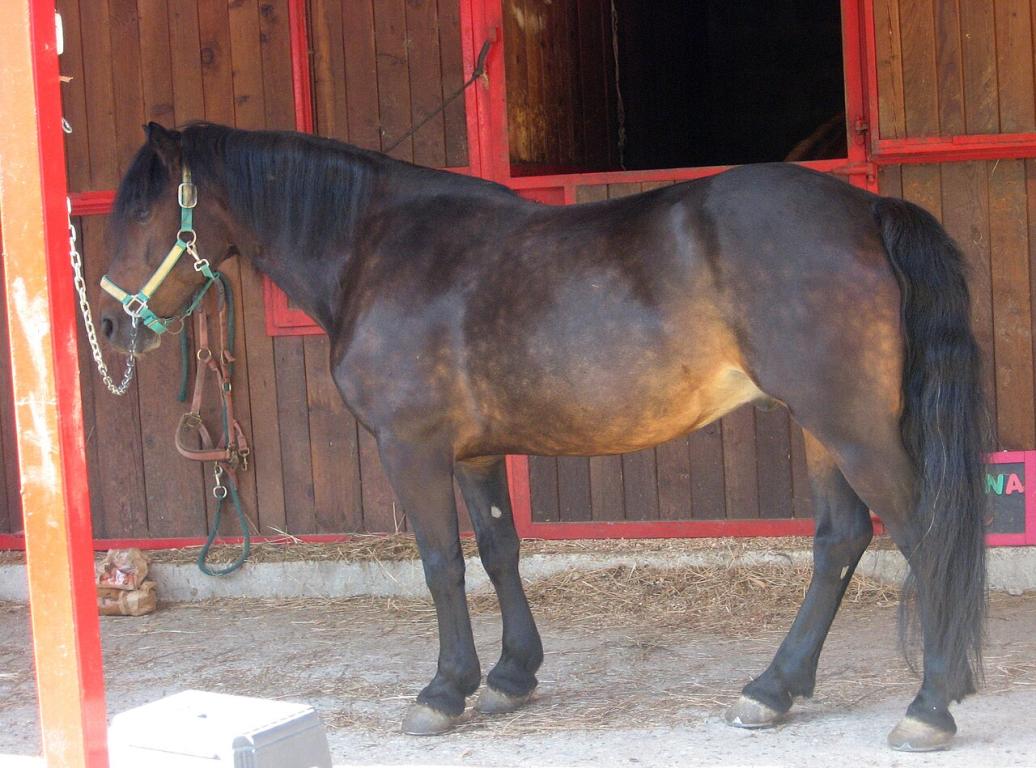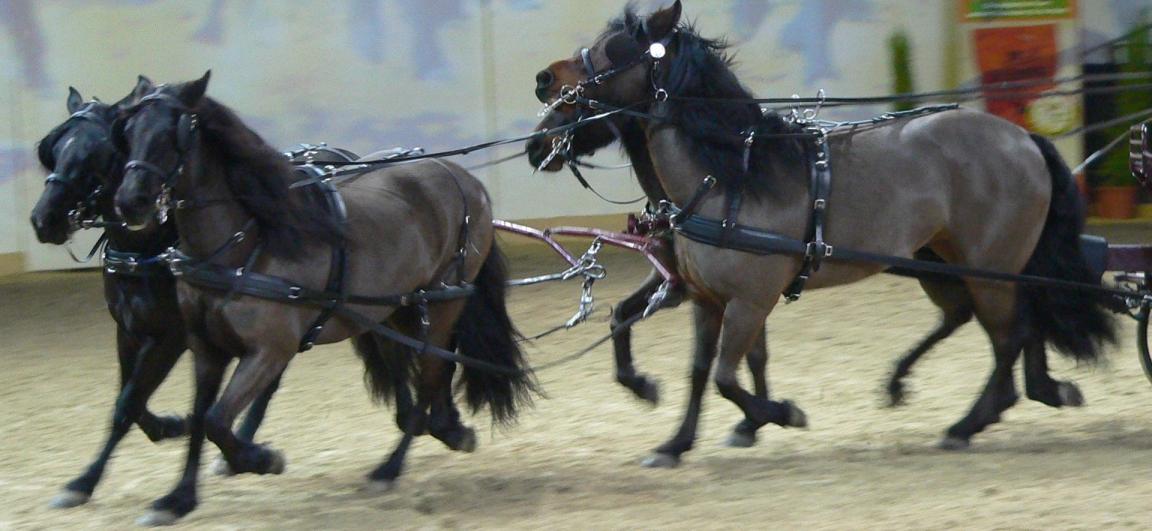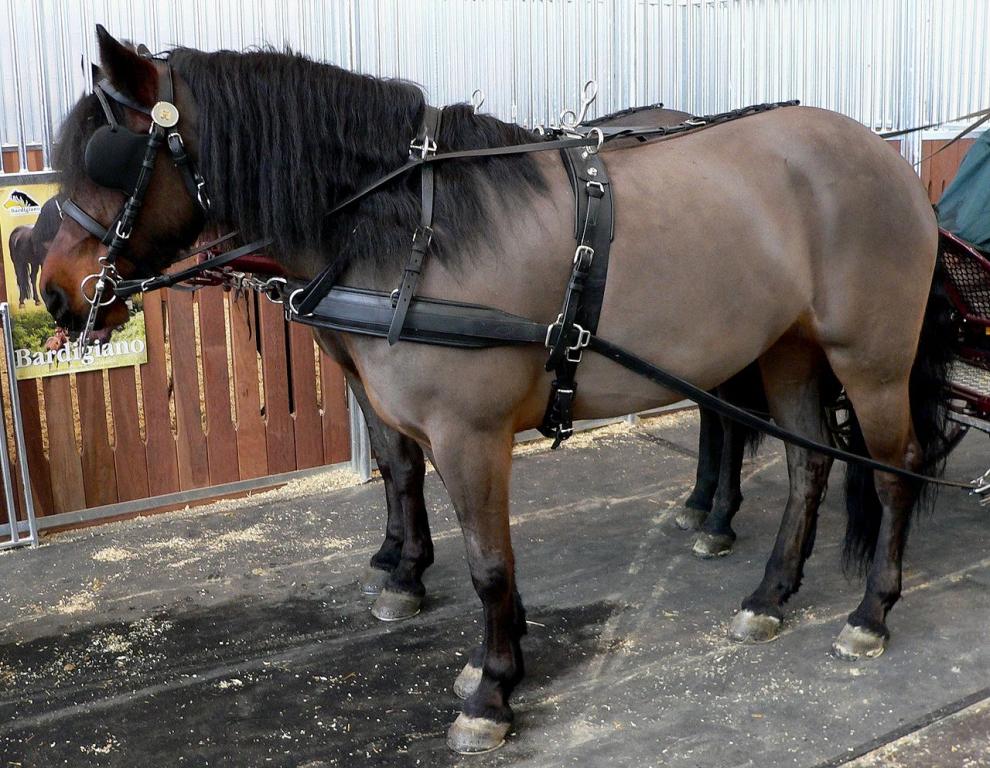
Continent: Europe
Country: Italy
Weight: 350 – 450 kg
Height: 135 – 149 cm


The Bardigiano originates from the northern Apennines of Italy, more specifically from the region of Bardi (Province of Parma, Emilia-Romagna).
The breed probably descends from small Celtic horses introduced into the region as early as Antiquity.
It was influenced by crossbreeding over the centuries, notably with Arabian and Neapolitan horses, while retaining a compact and robust conformation.
Shaped by a mountainous and harsh environment, it long served as a farm and pack horse in the villages of the Apennines.
Its official selection began after World War II, in order to preserve this equine heritage that was then threatened with extinction.
The Bardigiano is mainly bred in the northern Apennine mountains, around the town of Bardi (Province of Parma, Emilia-Romagna). It is in this rugged environment that it developed its strength and endurance.
Breeding gradually spread to neighboring provinces of Emilia-Romagna (Piacenza, Reggio Emilia, Modena), as well as Tuscany and Liguria, where the Bardigiano is used as a rural work and leisure horse.
Although its numbers remain modest, the Bardigiano is now represented in other regions of Italy, especially in the north and center of the country. A few breeders exist outside Italy, but the breed remains strongly tied to its native territory.
The Bardigiano represents a national genetic treasure for Italy, as it is the only equine breed specifically originating from the Northern Apennines. Its preservation contributes to maintaining European equine diversity.
Shaped by a rugged and steep landscape, the Bardigiano has developed qualities of hardiness, endurance, and frugal feeding. These traits are valuable for improving other breeds intended to thrive in challenging terrains.
Historically used as a farm, pack, and driving horse, the Bardigiano has proven its ability to combine strength, balance, and docility. This genetic potential makes it interesting for breeding programs seeking to enhance versatility and ease of use.
Threatened after World War II, it was saved by the establishment of the studbook in the 1970s. Today, its conservation directly contributes to the protection of equine biodiversity and the promotion of local European breeds.
Descended from small Celtic horses introduced into the Italian peninsula, the Bardigiano shaped its identity in the Apennine mountains.
It received infusions of Arabian and Neapolitan blood, which refined its type without reducing its robustness.
Used as a pack horse, driving horse, and farm horse, it was indispensable to the rural mountain communities.
After World War II, mechanization nearly caused its extinction. The creation of the studbook in 1977 marked its official revival.
The Bardigiano is known for its docility and ease of use, even with beginner riders.
Lively and enduring, it excels on rough terrain, maintaining a sure and steady gait.
Accustomed to living in herds, it shows good relations with its peers.
Calm in driving, attentive in leisure riding, and reliable in therapy, it adapts to many situations.
“A sturdy and kind pony, shaped by the mountains, both energetic and reassuring.”
The Bardigiano benefits from a conservation program supported by its studbook and local breeders.
Its gentle temperament and medium size make it an ideal choice for trail riding, family riding, and riding schools.
The studbook enforces strict management to limit inbreeding and preserve traditional bloodlines.
As a symbol of the Apennines, it is showcased during festivals and local shows. There is also a growing interest abroad, particularly among enthusiasts of rustic breeds.
Selected to survive in a demanding environment, the Bardigiano is considered a healthy and resistant breed.
It adapts well to outdoor living and easily adjusts to different climates, reinforcing its reputation as a rustic horse.